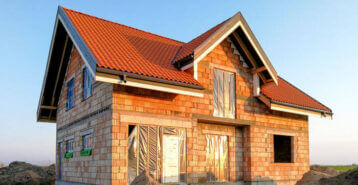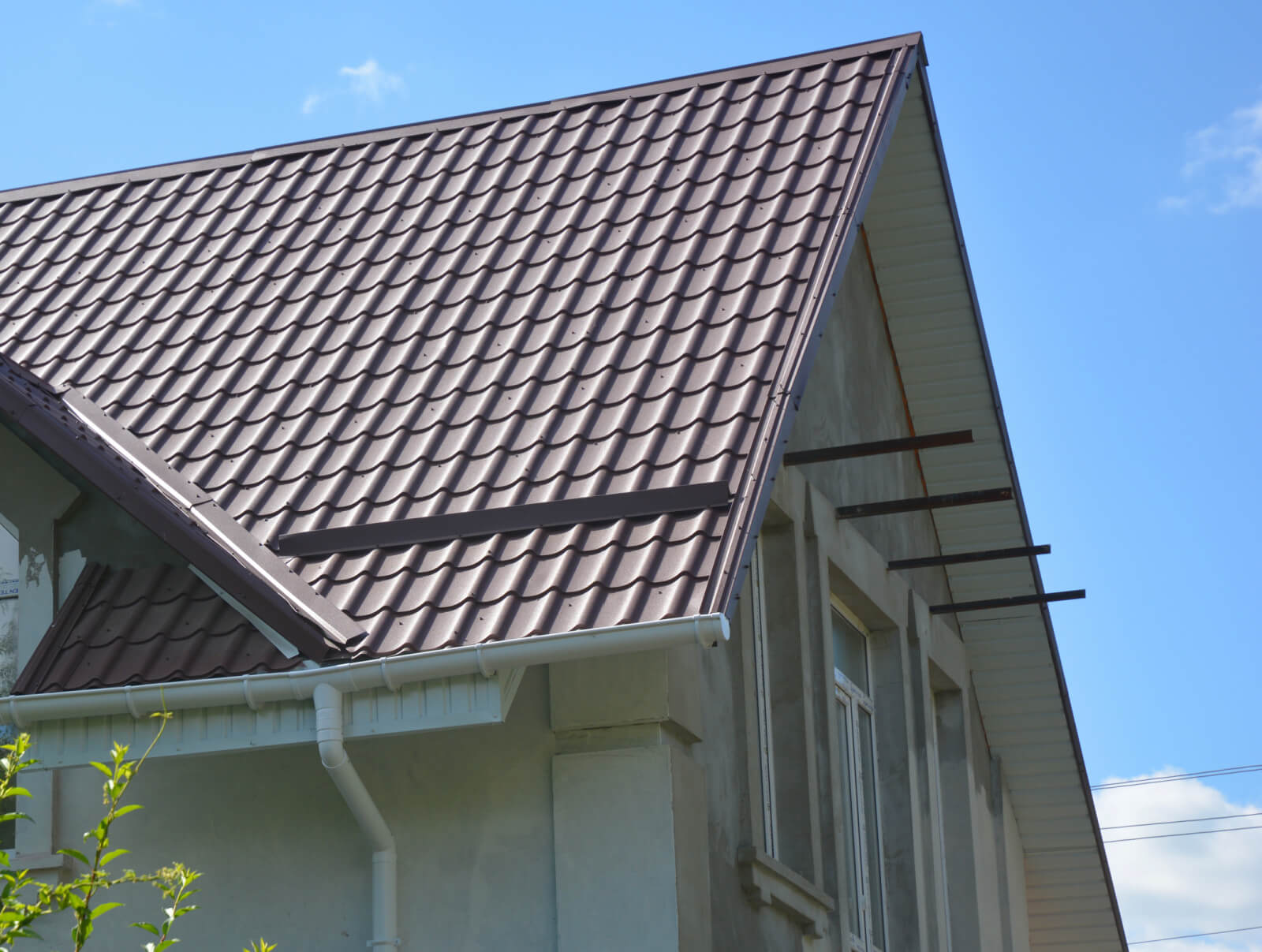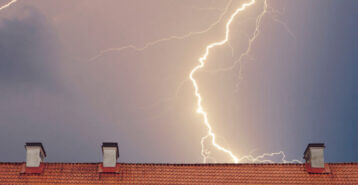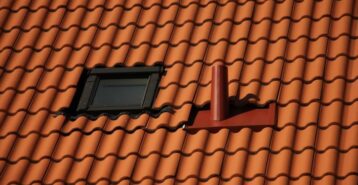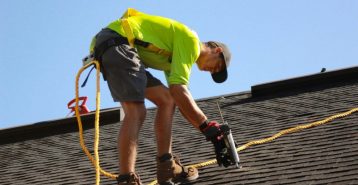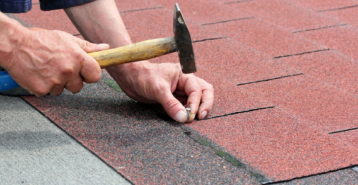Comprehensive Guide to Roof Materials
If you’re looking to upgrade your roof or install a new one, one of the biggest decisions you’ll need to make is the roof material. Many homeowners gravitate toward traditional asphalt shingles without realizing how many other options are available. Each roofing material has pros and cons, and depending on your climate, budget, and goals, some options may work better than others.
Main Types of Roofing Materials
Unless you want to read a thesis on roofing materials, we can’t cover all of them. Manufacturers can combine any number of materials into a composite roof, making the options nearly endless. However, there are a handful of main types, from asphalt to copper and everything in between.
Here’s a quick comparison of common roofing materials:
| Material | Average Lifespan | Fire-Resistance | Impact-Resistance | Relative Cost* |
|---|---|---|---|---|
| Asphalt | 15 to 30 years | Good | Not naturally good; improved types available | Low |
| Copper | 50 to 100+ years | Excellent | Excellent | Very High |
| Zinc | 60 to 100+ years | Excellent | Good | Medium to High |
| Tin | 20 to 40 years | Fair | Poor | Medium |
| Steel | 40 to 70 years | Excellent | Good | Low to Medium |
| Aluminum | 40 to 60 years | Excellent | Fair | Low to Medium |
| Clay | 50 to 100+ years | Excellent | Fair | Medium to High |
| Concrete | 40 to 75 years | Excellent | Good | Medium to High |
| Solar | 25 to 30 years | Good (varies) | Fair to Good | High |
| Green | 30 to 50 years | Poor to Fair | Good | Varies widely |
| Rubber | 30 to 50 years | Good (if treated) | Excellent | Low to Medium |
| Slate | 75 to 150+ years | Excellent | Good (can crack under heavy impact) | Low to High |
| Plastic | 20 to 40 years | Fair (varies) | Fair to Good (varies) | Low |
| Foam | 20 to 30 years | Good (coated) | Fair | Low to Medium |
| Cedar | 20 to 40 years | Poor (unless treated) | Good | Low to Medium |
| Tar and Gravel | 20 to 30 years | Fair | Good | Low |
*For detailed pricing, see our Roof Replacement Cost Calculator or our comprehensive Roof Shingles Cost Guide. We’ll also link to our individual material cost guides in the sections below.
Asphalt
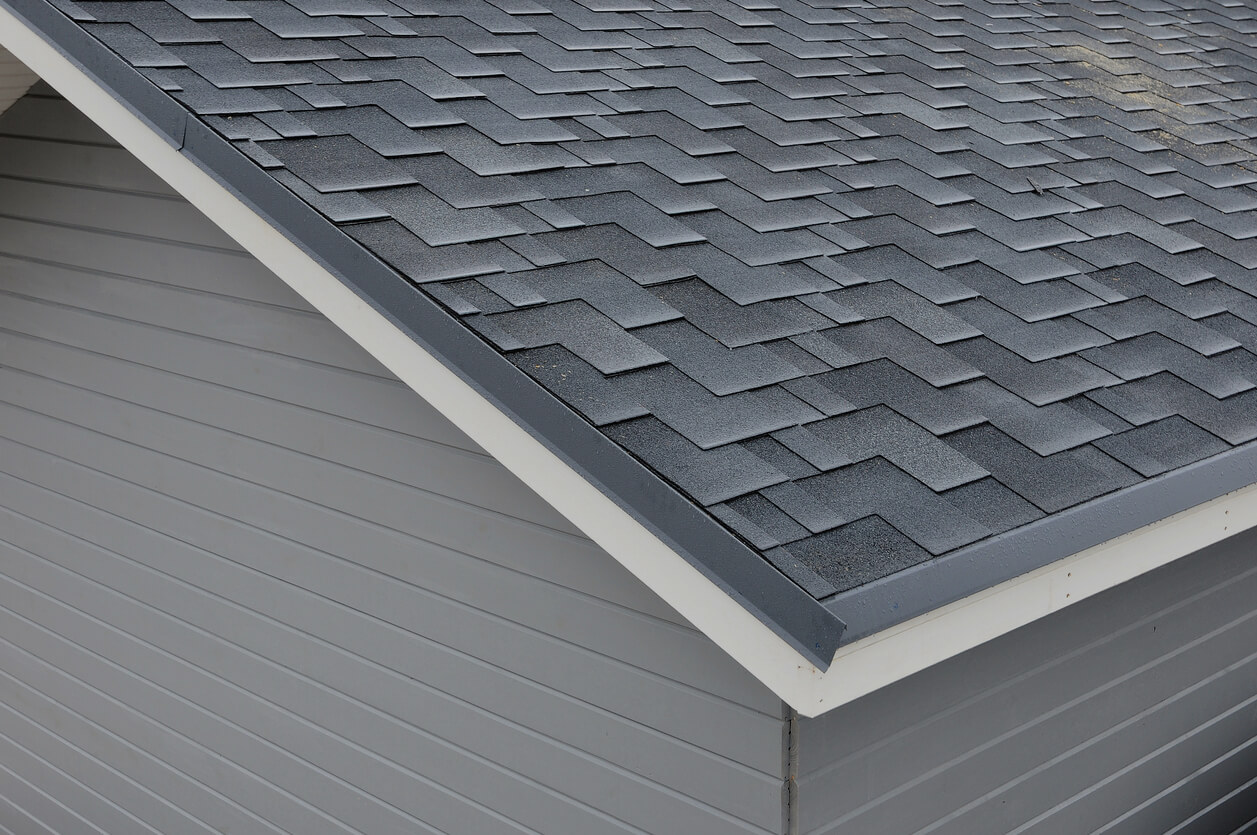
If you look at your house and most of the houses around you, there’s a good chance you’ll see asphalt shingles.
- Average Lifespan: 15 to 30 years
- Best for: Affordability and ease of repair
- Fire-Resistance: Good
- Impact-Resistance: Not naturally good, but impact-resistant types are available
Asphalt is the most common roofing material in the United States, offering a good balance of affordability and durability. These shingles are naturally fire-resistant, easy to repair, widely available, and some are even rated Class 4 Impact-Resistant.
Modern asphalt shingles have a fiberglass backing covered in asphalt and roofing granules. The two most common types are architectural and three-tab shingles. Three-tab shingles are more affordable but less durable than architectural ones.
» Read More: Asphalt Shingle Cost Guide
Copper
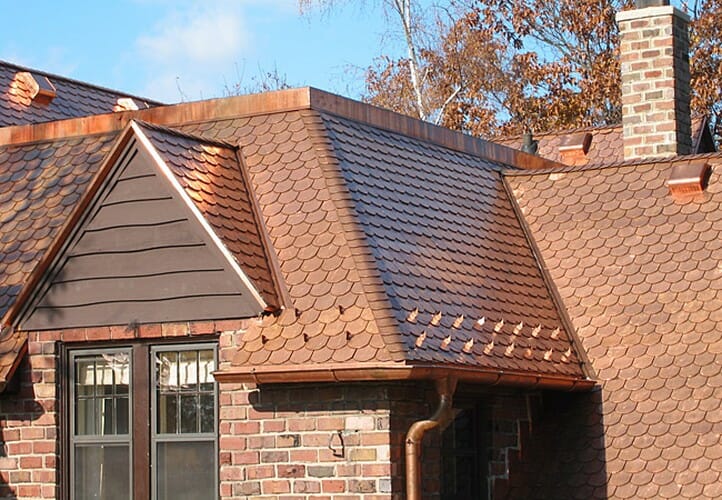
A copper roof makes a statement. These roofs are expensive, but they can last a lifetime.
- Average Lifespan: 50 to 100+ years
- Best for: Longevity and premium aesthetics
- Fire-Resistance: Excellent
- Impact-Resistance: Excellent
Copper roofs resist fire, impact, and corrosion and naturally develop a unique green patina over time, like the Statue of Liberty. This metal comes in various roof styles, including patterned shingles and standing seam panels.
» Read More: Copper Roof Cost Guide
Zinc 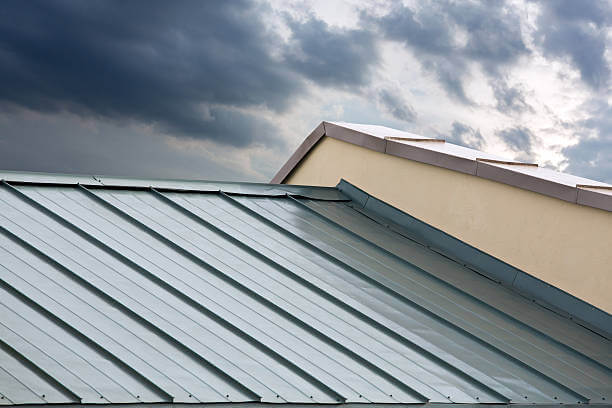
Zinc roofing is strong, naturally resists corrosion, and self-heals small scratches.
- Average Lifespan: 60 to 100+ years
- Best for: Low maintenance and sustainability
- Fire-Resistance: Excellent
- Impact-Resistance: Good
While zinc roofs are typically steel coated in zinc (aka galvanized steel) or zinc and aluminum (aka Galvalume steel) rather than solid zinc, this layer is key to their durability. Like copper, it develops a patina, which gives it a distinct look and added protection.
Unlike copper, zinc’s patina is more of a matte bluish-gray, so it’s more understated. Zinc roofs can last up to 100 years and are recyclable, making them a smart choice for eco-conscious homeowners. That long lifespan comes at a cost, though — zinc is one of the more expensive metal roof options.
» Read More: Copper Roof Cost Guide
Tin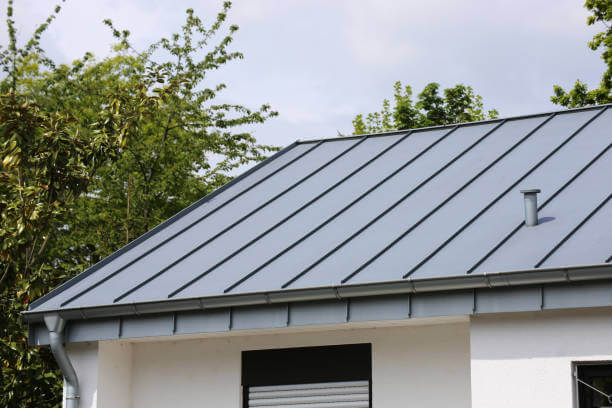
Tin roofs are not as common as they used to be, since they corrode and dent easily.
- Average Lifespan: 20 to 40 years (true tin); modern “tin” roofs vary
- Best for: Old-school rustic charm
- Fire-Resistance: Fair
- Impact-Resistance: Poor
What people often call “tin roofs” today are usually made from rolled steel coated with tin. Sometimes people use the term “tin roof” as a catch-all for metal roofs in general, too.
» Read More: Tin Roof Cost Guide
Steel 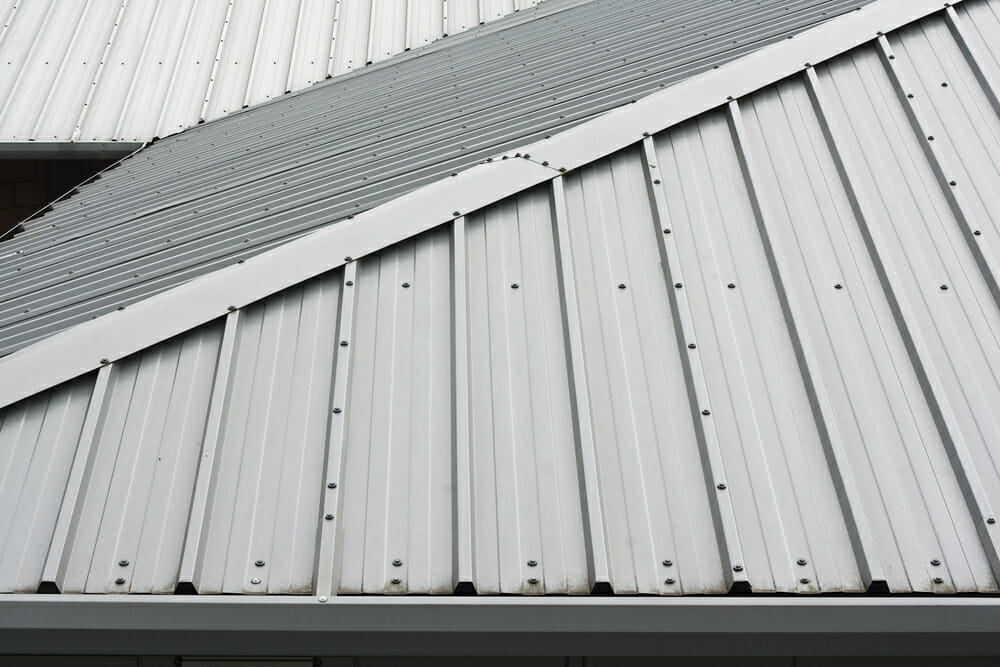
Steel roofing offers solid protection at a reasonable cost. It’s one of the most durable materials, easily resisting fire and impact.
- Average Lifespan: 40 to 70 years
- Best for: Durability and cost-effectiveness
- Fire-Resistance: Excellent
- Impact-Resistance: Good
Steel roofs can also be coated in stone (called stone-coated steel) or other finishes to mimic materials like slate or wood. This metal is ideal for homeowners who want long-term durability without the premium price of copper or zinc. However, steel requires occasional recoating to ensure it doesn’t rust. It may also require added structural roof support since it’s heavy.
» Read More: Steel Roof Cost Guide
Aluminum 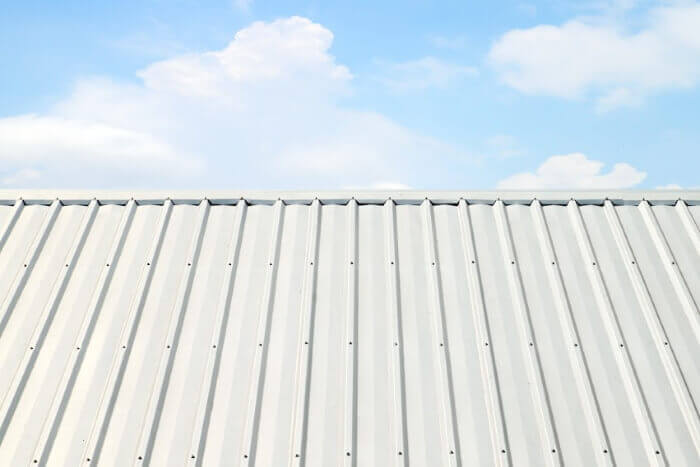
Aluminum is lightweight, rust-resistant, and great for seaside homes where salty air can wreak havoc on other materials.
- Average Lifespan: 40 to 60 years
- Best for: Coastal areas and corrosion resistance
- Fire-Resistance: Excellent
- Impact-Resistance: Fair
Aluminum is easy to shape and can mimic materials like asphalt shingles and clay tiles, making it a popular option for more intricate roof designs. However, aluminum is more prone to denting than some metal roof options, so homeowners in areas with a lot of hail may want to consider a sturdier metal.
» Read More: Aluminum Roof Cost Guide
Clay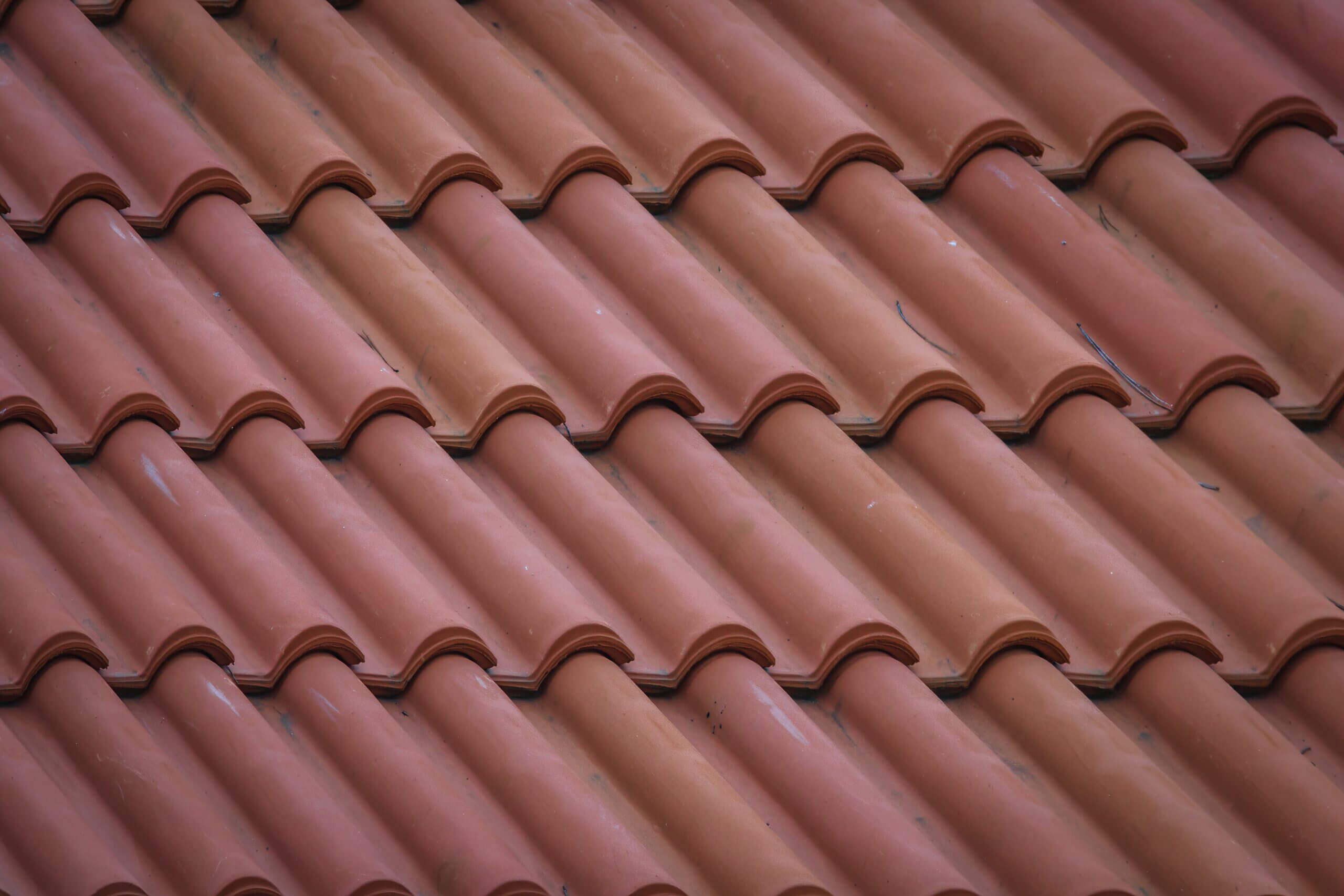
Clay tiles bring a classic, Mediterranean look to any home.
- Average Lifespan: 50 to 100+ years
- Best for: Hot climates and Mediterranean-style homes
- Fire-Resistance: Excellent
- Impact-Resistance: Fair
Clay tiles are extremely durable and can last more than 100 years if installed properly. It’s naturally resistant to fire and rot, but is also heavy; your roof structure needs to be strong enough to support it. These tiles are also brittle, so walking on them is a no-no. And while clay is typically rated Class 4 for impact resistance, we still don’t recommend it if you live in a hail-prone region.
» Read More: Clay Roof Tile Cost Guide
Concrete 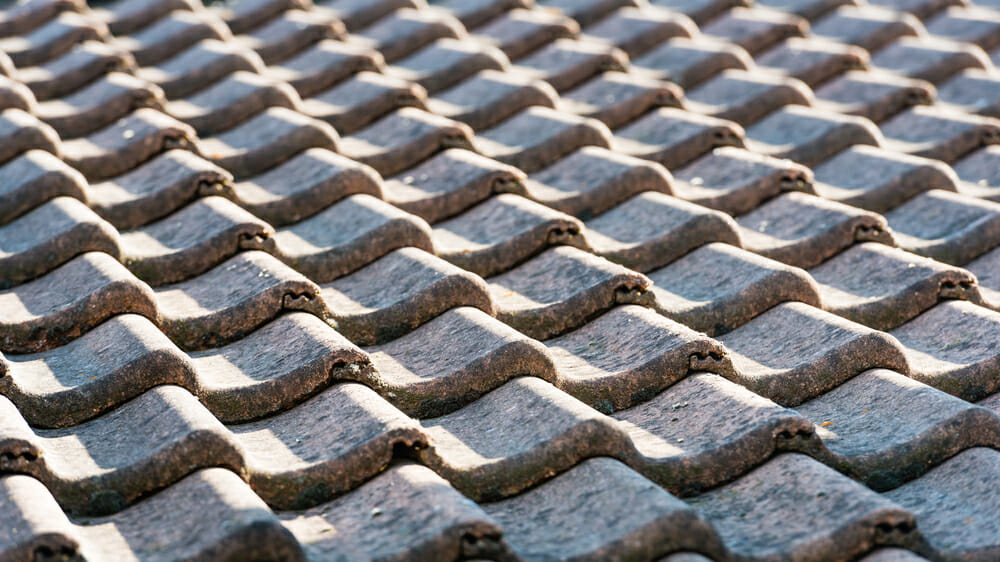
Concrete tiles offer many of the same benefits as clay but are usually a bit more affordable.
- Average Lifespan: 40 to 100 years
- Best for: Custom looks with added strength
- Fire-Resistance: Excellent
- Impact-Resistance: Good
Concrete roof tiles can be made to look like stone, wood, or traditional shingles. It’s tough and fire-resistant, but it’s also heavy and may require extra roof framing. These tiles are a good fit for homeowners who want a long-lasting roof with lots of style choices.
» Read More: Concrete Roof Tile Cost Guide
Solar 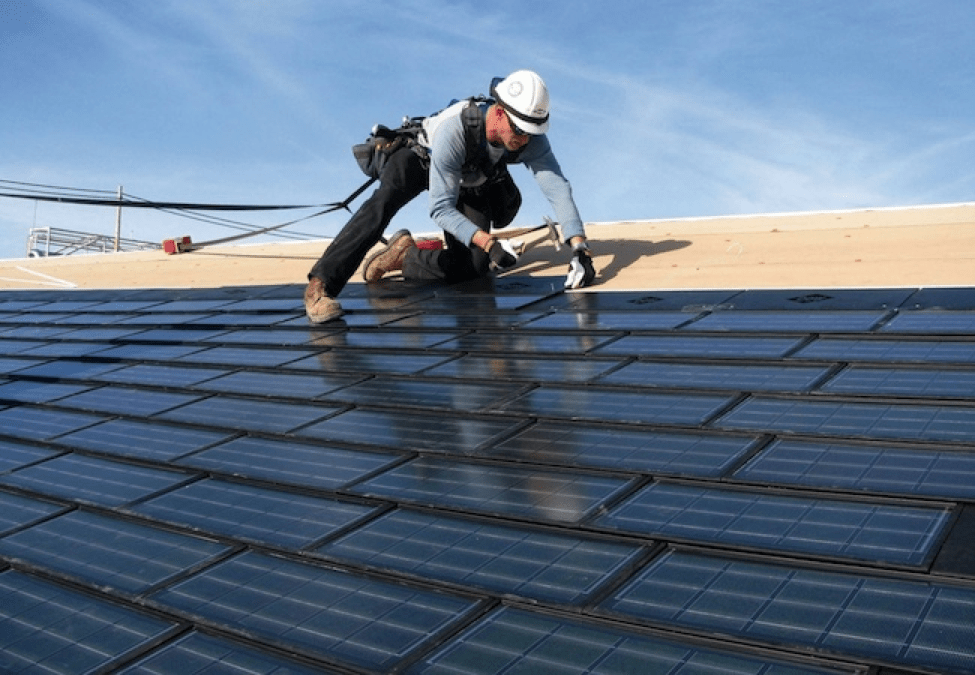
Instead of bulky panels, solar shingles or tiles blend in with your roof while generating electricity.
- Average Lifespan: 25 to 30 years (for solar performance)
- Best for: Energy savings and sustainability
- Fire-Resistance: Varies by product, typically good
- Impact-Resistance: Fair to good
Solar shingles cost more upfront than most roof materials, but federal and state incentives can help offset the price. Over time, you’ll save on energy bills and reduce your carbon footprint.
» Read More: Solar Shingles Cost Guide
Green 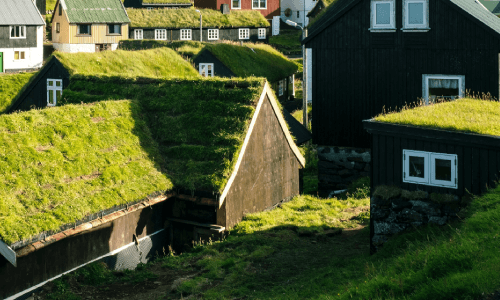
A green roof is literally green — it’s covered in plants.
- Average Lifespan: 30 to 50 years (with maintenance)
- Best for: Eco-friendly design and insulation
- Fire-Resistance: Poor to fair (unless protected)
- Impact-Resistance: Good (but some of the plants may die)
Green roofs help with insulation, reduce stormwater runoff, and support local biodiversity. They’re more common in urban areas and require a solid waterproof membrane and ongoing maintenance. Still, they’re a unique and eco-friendly option.
Rubber 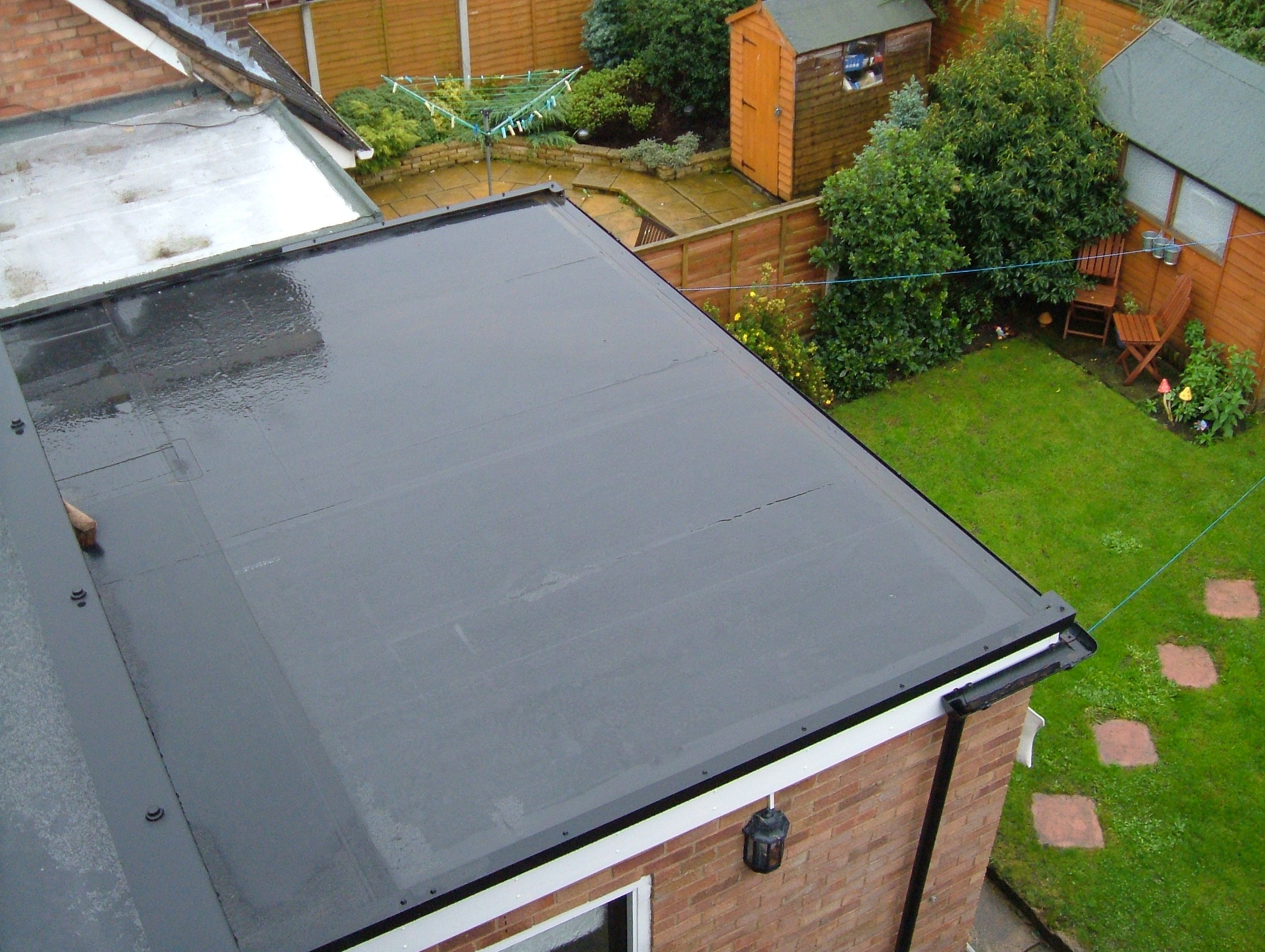
Rubber roofing, often made from recycled tires, works well on flat or low-slope roofs.
- Average Lifespan: 30 to 50 years
- Best for: Flat roofs and recycled materials
- Fire-Resistance: Good (if treated)
- Impact-Resistance: Excellent
You’ll find rubber roofing in two main forms: shingles and membranes. The shingles usually mimic the look of asphalt or slate, while the membranes (made of TPO, EPDM, or PVC) create a smooth, durable surface. Rubber is lightweight, flexible, and built to last, especially with regular maintenance. It holds up well against UV rays and harsh weather, making it a solid, budget-friendly choice.
» Read More: Solar Shingles Cost Guide
Slate 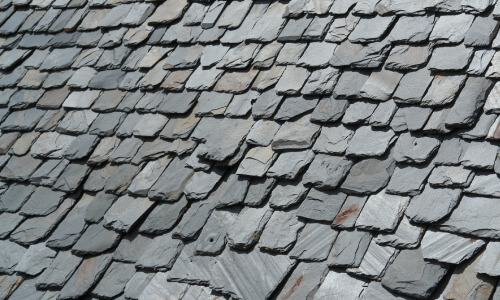
Slate is one of the most beautiful and durable roofing materials you can buy.
- Average Lifespan: 75 to 150+ years
- Average Cost (Materials + Labor): $8.00 to $35.00 per sq ft
- Best for: Longevity and natural beauty
- Fire-Resistance: Excellent
- Impact-Resistance: Good (can crack under very heavy impact)
Natural slate tiles can last over 100 years and are resistant to fire, mold, and pests. However, they’re heavy and expensive (both in terms of materials and labor). Slate can also be made in a hybrid form, with thinner pieces of the stone covering a synthetic core. This makes them lighter weight and a bit less expensive.
» Read More: Slate Roof Cost Guide
Plastic 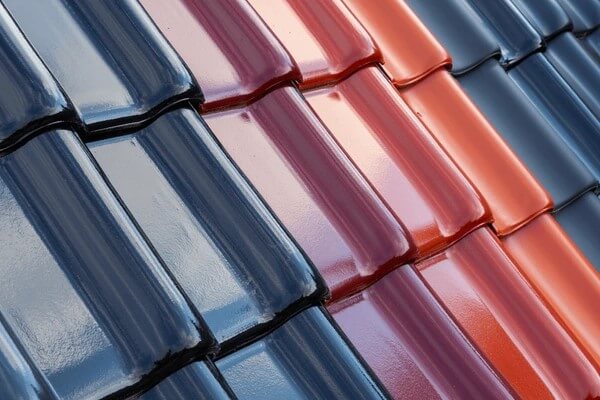
Plastic (composite) roofing materials are often designed to mimic more traditional options like wood, clay, or slate.
- Average Lifespan: 20 to 40 years
- Best for: Lightweight, affordable alternatives to high-end options
- Fire-Resistance: Fair (varies by product)
- Impact-Resistance: Fair to good (varies by product)
Plastic roofing tiles are lightweight, affordable, and easy to install. While not as long-lasting as other materials, some types are reinforced for better durability and UV resistance. They’re also often made from recycled materials (and some are recyclable), making them more eco-friendly than some alternatives.
» Read More: Plastic Composite Roofing Cost Guide
Foam 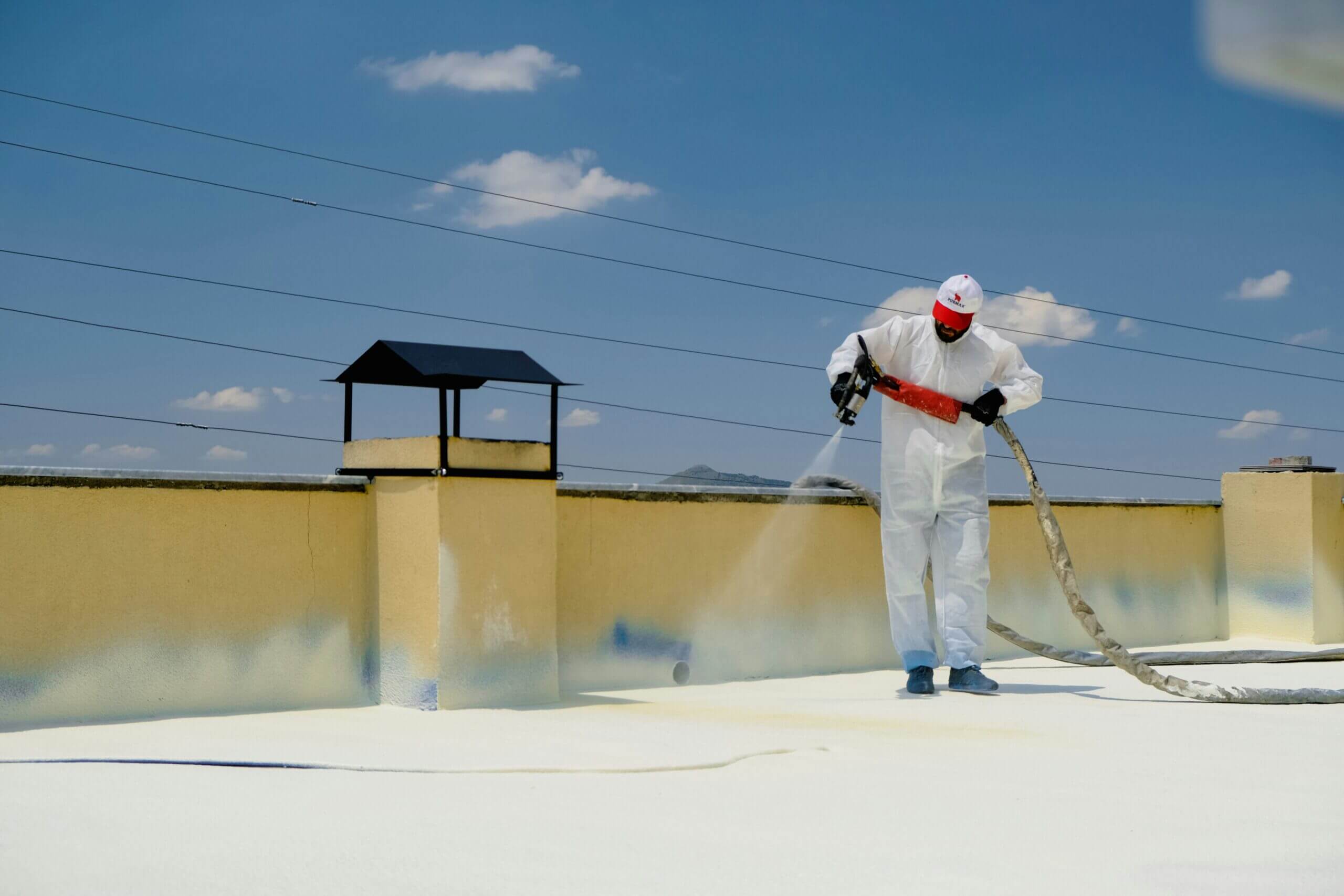
Spray foam roofing is typically used on flat roofs and offers excellent insulation.
- Average Lifespan: 20 to 30 years (with re-coating)
- Best for: Insulation and flat roofs
- Fire-Resistance: Good (with protective coating)
- Impact-Resistance: Fair
Once sprayed, foam roofing expands and hardens into a seamless barrier that’s water-resistant and energy efficient. It does need a protective coating to shield it from the sun, but it’s a solid option for commercial buildings or modern homes with flat designs.
» Read More: Spray Foam Roof Cost Guide
Cedar 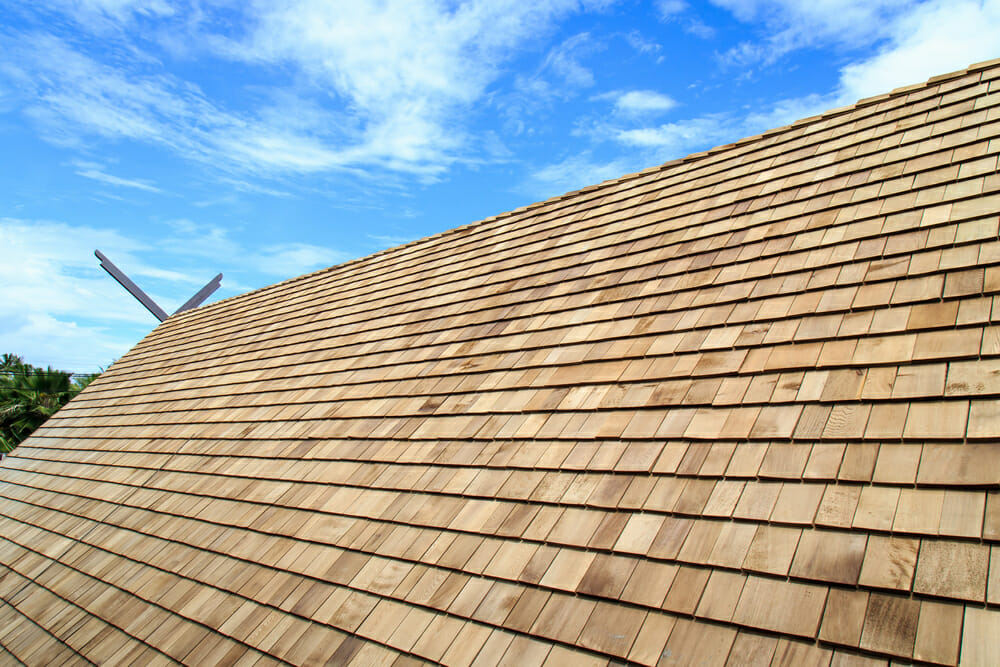
Cedar shakes or shingles offer a warm, natural look for an affordable cost.
- Average Lifespan: 20 to 40 years
- Best for: Rustic looks and natural insulation
- Fire-Resistance: Poor (unless treated)
- Impact-Resistance: Good
Cedar is a renewable material that insulates well, is lightweight and affordable, and performs pretty well in various climates. It does require maintenance to prevent mold and pests, and it’s more fire-prone unless treated. Still, for those who love rustic charm, cedar delivers.
» Read More: Cedar Roof Cost Guide
Tar and Gravel 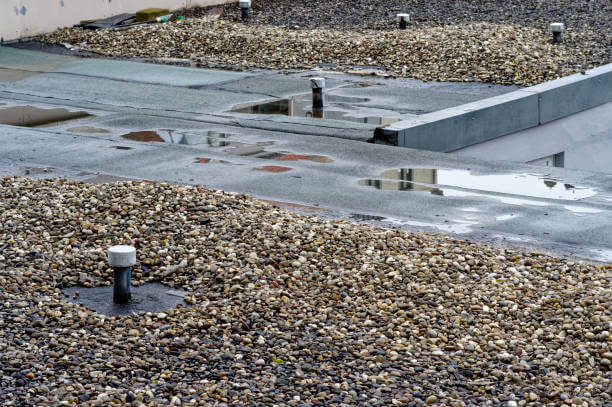
Tar and gravel roofs, also known as built-up roofs (BUR), are a go-to for flat or low-slope rooftops (especially commercial buildings).
- Average Lifespan: 20 to 30 years
- Best for: Flat roofs and cost-effective durability
- Fire-Resistance: Fair
- Impact-Resistance: Good
Built-up roofs are made by layering tar or asphalt with roofing felt, then topping it off with gravel to protect against the sun and weather. This type of roof is tough, affordable, and can last 20 to 30 years with proper care. However, it’s heavy and not the easiest to install or repair, so it’s best left to experienced pros.
» Read More: Tar & Gravel Roof Cost Guide
What Is the Best Roofing Material?
There’s no simple answer to which roofing material is best. The best roofing material depends on your climate, your budget, the slope and shape of your roof, and your home’s aesthetic. What’s best for you isn’t necessarily best for your neighbors or someone living in a different climate.
Fortunately, we have a helpful tool that matches you with the best roofing shingles for your climate, roof shape, and more. Click below to try it out.
